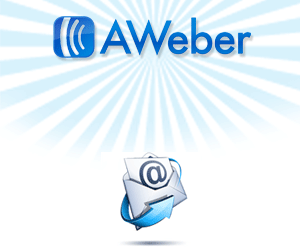Highlighting EM mistakes
Some business owners who decide to try email marketing (EM) share the notion that email marketing done in any manner or form is conducive to their business; but this notion might well be misconceived, because there are certainly numerous mistakes a business owner can make when s/he organizes an email marketing campaign. Examples of such mistakes might include:
- Allowing promotional materials to be tagged as spam;
- Failure to follow-up with promotional emails;
- Unpreparedness for increased customer interest after a given campaign;
- Neglecting to market specifically to a target audience.
Listed above are the four most prominent among email marketing mistakes committed by some business owners; but let’s take a closer look at each of these email marketing failures individually, beginning with the dreaded spam, which is as serious a problem affecting email marketing as any other; and – because there was a law created specifically to control it – could be seen as the most serious violation of any Web marketing law, rule or practice.
The dreaded spam
Spam is a problem that has become so prevalent on the Web that almost every email service provider, Web hosting company, major blogging platform and most other Web-based businesses have created a weapon to combat it; and still, Web users are bombarded with spam originating from various global destinations that seem to be ignorant of – or otherwise impervious to – CAN-Spam Act, the law previously referred to.
Spam, by its very nature, includes a host of unsolicited emails that promote products and/or services to recipients who may or may not be interested in purchasing, and certainly did not ask to receive them. But it is at this juncture that many business owners make a critical mistake when attempting to do legitimate email marketing business; which is to say, they send emails which are likely to be construed as spam and, as such, they never reach the intended recipients or are deleted by the “spam assassin” tool without ever being read by those recipients.
However, what these business owners must understand is the fact that another way exists in which they can avoid the potential of falling into the spam category as spam; and it is not very difficult to do. This better way basically involves ensuring that the promotional emails sent by their business contain more useful content than blatant advertising; and as a result they will likely see a significant uptick in their emails being taken seriously, both by their intended recipients and the detection software installed to capture and delete spam.
Follow-up & preparedness
Another email marketing mistake often made by some businesses is failure to follow up on promotional emails. Sending out emails to interested parties can be very beneficial; but it is even more beneficial to contact the recipients by other methods, such as mail or telephone, to answer any questions they may have, and offer additional information they might require. This type of follow-up can be much more effective than simply sending an email and allowing it to fall into the abyss of an overcrowded email inbox.
Business owners may also commit the mistake of not preparing themselves for an influx of customers after an email marketing campaign has been completed. The express purpose of email marketing is to generate increased interest in products and/or services offered by the business; so it follows that the business which initiates and completes such campaigns must anticipate an increase in business, and be prepared to accommodate this increased demand for products and services.
In fact, such preparedness is critically important because potential customers who are forced to wait for products or services might just get tired of waiting and go elsewhere (competitors of that business) in search of better service; and if a particular competitor proves to be better prepared to provide them with products or services immediately, that’s where they will spend their time and money.
Target marketing
All too often business owners fail to tailor an email marketing campaign to their specific target market (or audience). This failure represents the fourth mistake on our list, because it is a problem that may result in the email marketing campaign being less effective. Business owners typically make this mistake because they fall into the trap of believing that it is more important to reach a large audience than it is to reach a target audience.
Think of it this way: Blindly sending your business email marketing materials to millions of recipients and only generating a few leads is far less effective than sending the same email marketing materials to a smaller group of, say, only a thousand recipients who all have expressed an interest in your products and services; because the smaller group will certainly generate more leads since they’ve already shown that they’re more likely to do business with you.
It is not only important to send your message to members of your target audience, but also to tailor your message to suit this particular audience. The simple rule to which an email marketing business should is this: Creating an email message which will appeal to a variety of individuals is not nearly as important as creating a message which will appeal to members of its target audience.
The autoresponder
You will need an autoresponder system with which to initiate and effectively complete the email marketing techniques suggested in this article; and which there are many on the Web to choose from, we’ve found this industry leader among the most reputable and affordable email marketing companies.



